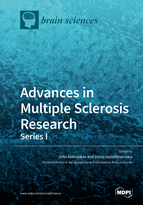The Use of Electrochemical Voltammetric Techniques and High-Pressure Liquid Chromatography to Evaluate Conjugation Efficiency of Multiple Sclerosis Peptide-Carrier Conjugates
Round 1
Reviewer 1 Report
Novel techniques for drug detection to examine conjugation of peptides relevant to treat MS. Some editing of the manuscript is required
Line 23 Change to: In our recent studies,
26 change to detected as a conjugate
39 change to: dependent on
44 change to: exhibit a wide
64 change to: to the mannose
68 change to: PLP 139-141
93/94 change to: Saccharomyces cerevisiae
127 change to: to over 97% purity
134 change to: Saccharomyces cerevisiae
139 change to: 10.5 rather than 10,5 (and correct throughout text)
273 change to: In contrast to (this sentence needs re writing as it is not clear)
290 change to: 35 (remove x)
300 change to: to block further
Author Response
Please see the attachment.
Author Response File: ![]() Author Response.docx
Author Response.docx
Reviewer 2 Report
In the present study Deskoulidis E at al., have described the conjugation of the multiple sclerosis epitope peptide MOG35-55 with mannan using electrochemical voltammetric and HPLC techniques, an alternative to lengthy capillary electrophoresis and polyacrylamide gel electrophoresis.
Major Comments:
- HPLC technique alone itself can confirm the conjugation of MOG35-55 with mannan. In such case reviewer is not convinced that there is an unmet need to develop methods like electrochemical voltammetric to monitor conjugation of sclerosis epitope peptide MOG35-55 with mannan.
- Can we quantitate the oxidized mannan-[Lys-Gly]5-MOG35-55 conjugate using electrochemical voltammetric technique? MS, HPLC or fluorescent based techniques can confirm the conjugation quantitatively.
- What is the sensitivity of DPV technique to detect the least amount of API, in this case oxidized mannan-[Lys-Gly]5-MOG35-55 conjugate?
- Overall reviewer is not convinced about the importance of electrochemical voltammetric technique over capillary electrophoresis or poly acrylamide gel electrophoresis.
Minor Comments
- Typo- Line 167- Characterization
- All the different MOG peptide sequences to be tabulated.
Author Response
Please see the attachment.
Author Response File: ![]() Author Response.docx
Author Response.docx
Round 2
Reviewer 2 Report
Thank you for responding to all the comments satisfactorily.
Authors contribution towards developing this voltametric technique as an alternative to the available HPLC/MS/PAGE techniques to monitor the mannan-peptide conjugates could possibly lead the API industry to adopt this as a standard technique which can in future replace the existing methods.





